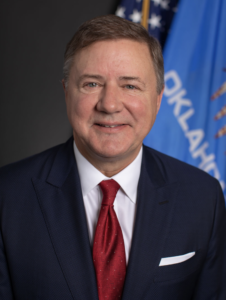During this summer, a team of students from MIT embarked on a journey to the sou …
Oklahoma Supreme Court to Consider Religious Charter School Case with Church-State Implications
Carlos Changemaker

On a 60-acre homestead approximately 80 miles south of Oklahoma City, Craig and Joy Stevens tend to goats and chickens. Their homestead is just a 35-minute drive from the church they attend weekly and over an hour from the nearest Catholic school they are considering for their daughter, Chloe.
Seeking a religious education tailored to their beliefs, Craig and Joy Stevens are exploring enrolling Chloe in St. Isidore of Seville Catholic Virtual School. This move has stirred a national conversation on the delicate balance between church and state.
Chloe is gearing up for her confirmation in late April, solidifying her faith. In addition to regular church attendance, the family listens to a popular “Bible in a Year” podcast by a priest from Minnesota. Joy, Chloe’s mother, cited concerns about the moral environment at Chloe’s current public school, emphasizing the desire for a more wholesome Catholic schooling experience.
Many parents gravitate towards private and faith-based schools for reasons like those driving the Stevens family. However, a pivotal legal battle is brewing in Oklahoma as the state’s Supreme Court prepares to tackle the groundbreaking issue of whether publicly funded charter schools can promote religious values. Attorney General Gentner Drummond asserts the approval of St. Isidore’s charter disregarded state and federal laws, setting the stage for a contentious legal showdown.
The stakes are high heading into the court hearing, scheduled for Tuesday. Virtual charter board Chair Robert Franklin anticipates far-reaching implications, expressing the urgency and significance of the impending decision. With conflicting views on the board’s actions, the case promises to shape educational policies and precedents moving forward.
Notably, the composition of the board that authorized the school has undergone significant changes. The three members who supported the school’s charter application are no longer part of the board, raising questions about the legality of the approval process. The involvement of state officials and their positions add layers of complexity to an already contentious legal battle.
The controversy surrounding the school’s establishment has reignited the age-old discussion on church-state separation. Advocates on both sides point to recent U.S. Supreme Court rulings to bolster their arguments. The establishment of St. Isidore of Seville Catholic Virtual School marks a unique chapter in the ongoing debate on the intersection of education and religious freedom.
Attorney General Gentner Drummond, in his ongoing legal challenge, contends that the designation of St. Isidore as a public school under Oklahoma law fundamentally alters the applicability of recent Supreme Court decisions. The legal nuances at play underscore the intricacies of the case, setting the stage for a prolonged legal battle.

Observers anticipate the court’s ruling to have far-reaching implications, potentially paving the way for future legal challenges. Despite Oklahoma’s political landscape, the state Supreme Court’s decisions on this matter may transcend state boundaries, likely triggering federal scrutiny.
Matters of contention
The legal battle against St. Isidore’s inception extends beyond Drummond’s lawsuit. Concerned parties have launched additional legal challenges against the school, underscoring the gravity of the issues at hand. Public school advocates and stakeholders are united in their quest to address discrimination concerns surrounding the school’s charter approval.
Challenges raised against the school’s operations resonate with broader discussions on discrimination and religious freedoms. Alex Luchenitser, representing Americans United for Separation of Church and State, highlights the critical issues at stake, emphasizing the need for a robust legal response.
As St. Isidore prepares for its inaugural school year, its admissions criteria and policies are under scrutiny. The school’s commitment to serving students with disabilities while upholding religious principles introduces complexities that have yet to be fully addressed. Legal concerns have underscored the necessity of complying with education mandates, warranting additional scrutiny.
The school’s stance on LGBTQ rights and gender identity issues has sparked controversy, signaling potential conflicts with existing legal frameworks. With ongoing legal battles, the school’s policies face intense scrutiny, pointing to a protracted legal tussle ahead.
Acknowledging the broader implications of the school’s stance on key issues, Luchenitser underscored the urgent need for legal intervention. The ensuing legal battles are poised to shape the educational landscape and influence policy decisions.
The legal saga surrounding St. Isidore sets the stage for a protracted legal battle with significant implications for education and religious freedom. As the legal wrangling continues, stakeholders brace for prolonged legal battles that may shape the future of educational policies and rights.
It remains to be seen how the legal battles surrounding St. Isidore will unfold in the coming months. With conflicting interests and legal complexities at play, the school’s future hangs in the balance, awaiting a final legal verdict.


